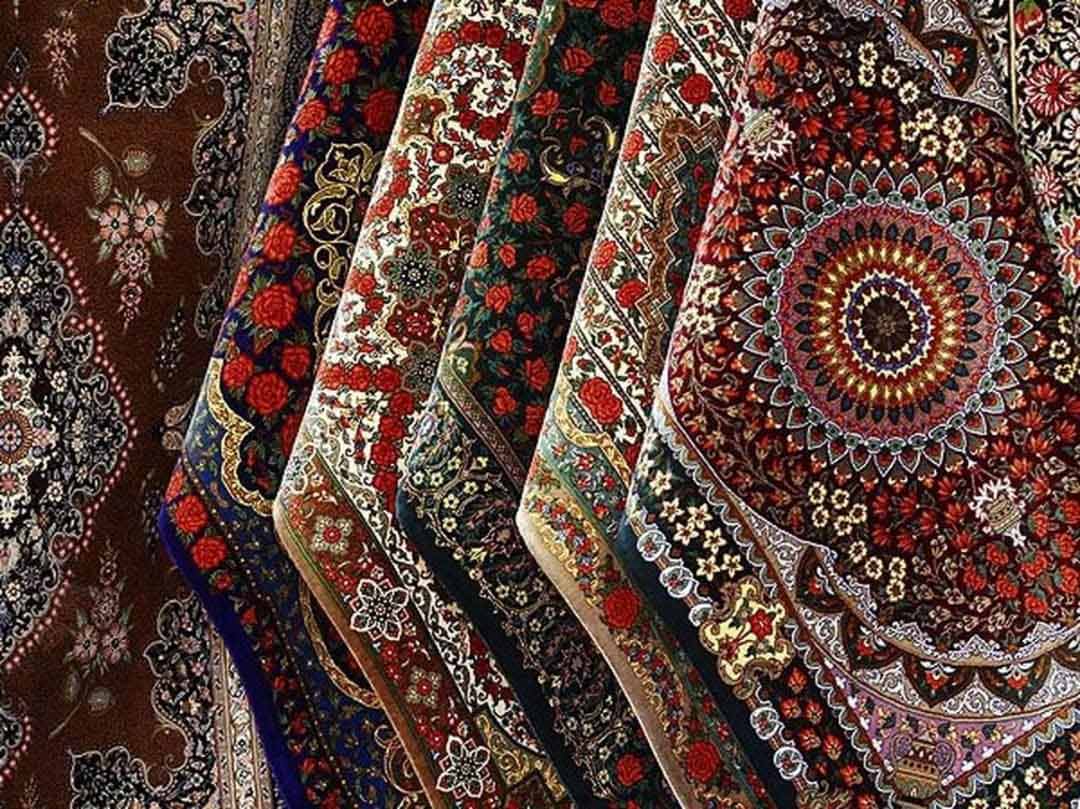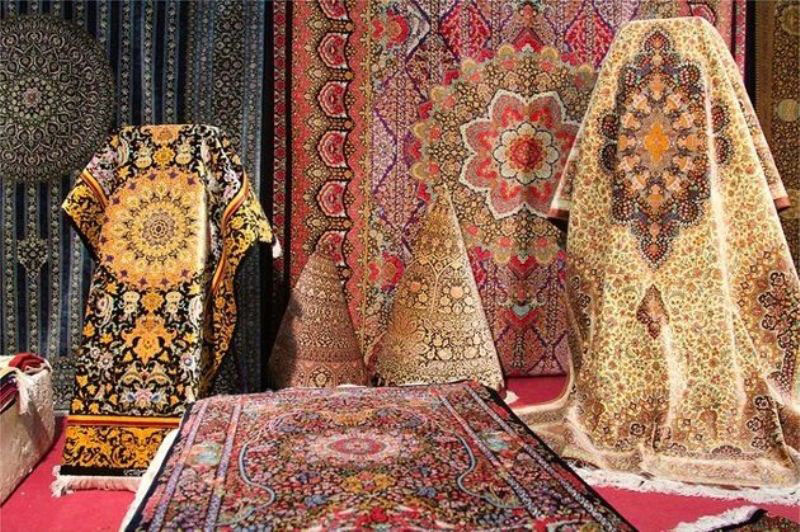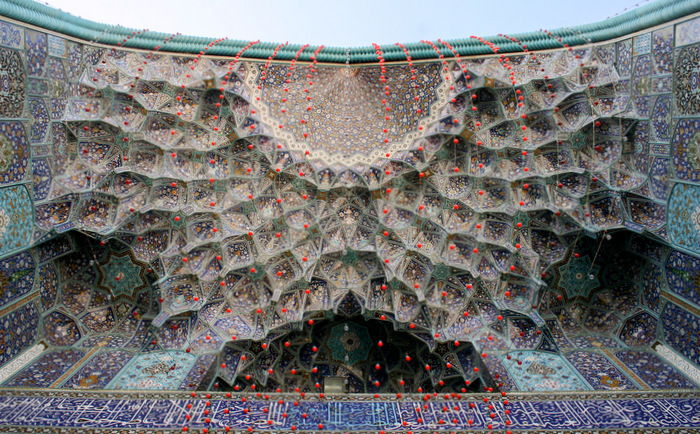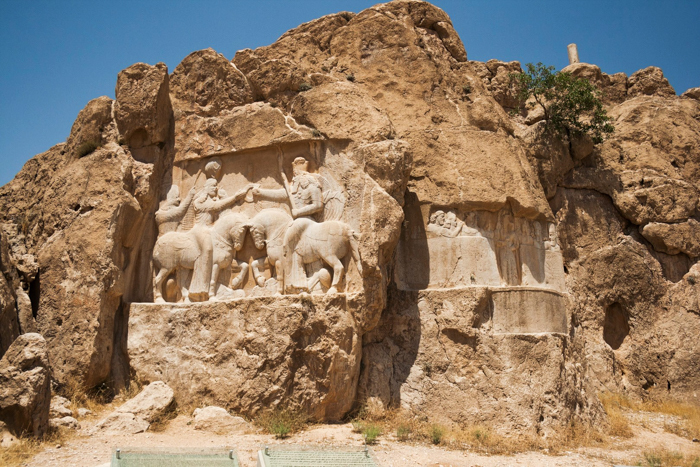A glimpse on the Persian Carpet
Persian Carpet (Quali) has been considered as a sublime embodiment of timeless beauty and elegance over thousands of years in human history and it has constantly evolved into a more elegant and artistic creation throughout its existence. It has always been an essential part of Persian culture and a staple of each Iranian home. For centuries, Persian Carpets have been appreciated for their high quality, uniqueness and the fact that they are handwoven. The variety of Persian Carpets is somewhat impressive if you put some thought into it; from large carpets knotted in workshops to lively patterned village carpets and charming nomadic carpets. These hand-woven arts are not only limited to carpets. There are other relative structures with different materials, design executions and techniques, that have also made a special place for themselves in Persian culture such as Gabbeh, Kilim and Palas.
The journey through the world of antique Persian Rugs is not only a treat for the eyes, but also a journey through culture. The patterns, the sizes and the colors are all rooted in deeper meanings and sometimes, possibly stories. Stories of past generations and their traditions.
Theoretically, it is implied that a Persian Rug would have to be at least 80 years old to be considered “antique”.

Hand-woven Persian Carpets
As the Persian carpet has been a subject of interest amongst many people including us, Kalout team has taken the elaborate decision to present this historical and cultural legacy through our eyes. We are beyond ourselves to be able to share this gem with our international friends and clients.
Brief History
A significant part of the movement of the Persian floor covering lies related to the different leaders of the nation all through time. By vanquishing Babylon in 539 BC, Cyrus the Great was struck by its quality, which led him to present the craft of rug making into Persia. Numerous history specialists credit Cyrus for this cultural and artistic impression. It is said that the burial chamber of Cyrus the Great, at Pasargadae close to Persepolis, was secured with valuable rugs.
Renowned conventional Iranian floor coverings caused some zones to incorporate Mashhad, Tabriz, Arak, Isfahan, Kashan and Kerman. Notable assortments of Persian carpets, some from the previously mentioned cities and provinces include Khorasan, Herat, Shiraz and Hamedan.
Through history, until the 19th century, people from nomads to kings, only utilized the rugs from Persia as floor coverings and decorations. Generally, the word carpet was used for any cover, such as a table cover or wall hanging. However, afterwards it has been seen with a fresh pair of eyes, as a genuine art form.
Nowadays, these carpets are appreciated not only as artworks but also as investment worthy pieces. The experience of seeing and feeling a genuine antique Persian rug in person, can be truly powerful.

Antique Persian Rug
The orientation of carpet weaving in Persia goes back to more than 2,500 years ago. At first, carpets and rugs were made as simple necessities to cover the floors, protecting people from the cold and damp and provided them with warmth and comfort. However, through time, the skill and craft of weaving carpets gradually evolved to the creation of art works that passed down from generation to generation over the centuries.
In the past, it was believed that the geometric designs and symbolic figures protect the Persian rug’s owner from misfortune and evil. As for the tribal rug designs, the pattern of animals, people, and everyday objects, are a classic example of art imitating life. Persian antique rugs are one-of-a-kind masterpieces and luxury design items, which can make a house, feel like a home. Not to mention they have been quite popular amongst Europeans aristocrats like England and Germany, especially during the 1850’s. Due to their timeless elegance, hand woven Persian rugs are an unbeatable, must-have piece among designers.
During the Safavid Period, Persia was an ancient and powerful empire embracing lands from Africa to India. The largest flourishing carpet producing areas were the now modern-day cities of Tabriz, Herat, Kashan and Kerman. The Safavid Dynasty encouraged many other kinds of arts as well, which stepped into the original foot prints of the art of carpet weaving, including painting, calligraphy and intricate weaving. Nowadays these patterns have made their way onto the nomads traditional clothing, table cloths and animals’ saddlebags. There are also certain woven curtains, which are mainly used to divide a room from another. These detailed weavings and pattern are not only bound down to nomadic areas. Modern day fashion is no stranger to intricate weaving or crosshairs. Many hand-made rugs with intricate designs, which passed down from one generation to another, have survived for hundreds of years, as they were so well crafted and cherished. These specific rugs are evidence of a rich heritage and culture.

A local woman hand weaving a Persian carpet
Persia is considered one of (if not the most) varied carpet producing regions of the Middle East. However, the “golden era” of Persian Carpets really began after the foundation of the Safavid Dynasty and during the 16th and 17th centuries, Persia produced many of the great masterpiece carpets, which are still in existence today.
The display of Persian carpet from outside in & International legacies
As briefly mentioned, the rugs from Persia also made their way west to Europe. Persian Carpet started a long journey of display from Spain, which was initially introduced to the art from Northern Africa and Morocco and ended up in Southern Europe.
As of today, the most famous Persian carpets came from Tabriz, which are referred to as the Twin Ardabil Carpets. These carpets have made it in the permanent collections of the Victoria & Albert Museum and Los Angeles Country Museum.

Sheikh Safi Persian carpet at the Victoria and Albert museum
It is only fit to introduce some of these fine carpets to paint a picture of how mesmerizing they actually are. Let’s not forget that with Kalout international tours, all these treasures would be personally introduced to our visitors.
A beautiful rug belonging to Northwest Persia is the “animal” carpet, half of which is in Kraków Cathedral, Poland, and half in the Museum of Decorative Arts, Paris. Another legacy of antique Persian carpet is the great “hunting” carpet, which now is in the Museo Poldi Pezzoli in Milan. A deep blue field, where hunters dash after their prey, covered with a compelling network of blossoming stems surrounds a scarlet and gold medallion which brings this magnificent design to finish. The words inscribed with the museum display read: “It is by the efforts of Giyath-ud-Din ʿJami that this renowned carpet was brought to such perfection in the year 1521.”
The world’s oldest hand-woven carpet is the Pazyryk Rug, which dates back to 2,500 years ago. This piece includes Iranian and Achaemenid motifs. The carpet is currently kept at the Hermitage Museum in St. Petersburg.
And lastly, Silk carpets woven to surround the shrine of Shah Abbas the second in Qom were the last superior achievements in Persian Carpet weaving. The pattern is beautiful, the colors are varied and in harmony with each other. The piece is dated and signed by Nimat Allah of Joshaqan.

Silk Persian carpet
The market and value of Persian carpets
Hand-woven Carpet is one of Iran’s key non-oil exports, considering Iran makes three quarters of the world’s hand-woven carpets.
The Persian Carpet is pretty popular among European (Germany for instance) and American Aristocrats and interior design or art connoisseur in general.
The value of the Persian carpet is determined by various factors, including the beauty, intricacy and authenticity of designs, durability of colors, the quality of materials and the knots as well as the years of labor spent for producing each carpet.
According to estimates by the Iranian Industry, Iran annually makes around 400 tons of hand-woven carpets, the majority of which are exported to other countries.

The display of a few grand Persian carpets for an auction
The authentic Persian carpet has lost a part of its share in the international market as replicas with lower price and quality from China, Afghanistan, Turkey and Pakistan have flooded the market. Regardless of other countries’ replicas and Monets of the Persian Rug, real Persian art connoisseurs believe this particular Iranian handicraft still maintains its status in the world.
Moreover, the unique features of the Persian Nomadic Rug have made it impossible for other producers to copy the exact handicraft.
According to the recent reports, over the past decade, the Persian Carpet Industry has experienced one of the roughest times in its era. Nonetheless, it still stands on top of its game due to its deep roots.
Fun facts
■ Khosrow Carpet: There has been a legendary, royal silk carpet woven with an intention of nothing but magnificent beauty, dedicated to the divine role of the king, a mythical king who turned each season around and promised the return of spring and earth’s fertility. The Spring of Khosrow Carpet made for the audience hall of the Sāsānid palace at Ctesiphon.
Khosrow Carpet was a representation of the Garden of Eden, which in other words symbolized a promise of eternal happiness.
Unfortunately, this masterpiece has not survived throughout time. According to written records, the motifs and superior embellishments of this piece were mind blowing. Just to train your imagination, picture a royal garden with watercourses, paths, rectangular flowerbeds and blossoming shrubs and fruit trees, which were the main motifs and patters of this carpet. A literal yellow brick road, woven in gold and each flower pedal, fruit or bird was worked in with pearls and different jewels. The border was not just woven out yarn like ordinary carpets. This border was by itself, a smaller frame holding the scene of a meadow, solid with emeralds. It’s truly a shame to miss out laying our eyes on such a terrific piece.

Qab Qabi( Frame pattern)carpet
■ It is referenced in numerous western records that Iranians stroll on nurseries, sky and suchlike that were weaved on twist and woof. Iranian heaven had seven dividers to keep evil spirits from entering inside, the example which has been seen in the arrangement of Persian Gardens too.
■ The general state of the Iranian rug is square or square shape, to help to remember the four old style components, the four fundamental headings and the example of nurseries. At the point when the circle joined the rug conspire, it has become to look like a sanctuary, keeping each consecrated thing inside it. In Islamic time the hover set in the focal point of the square shape territory, to be the uprightness of presence. The Islamic craftsmanship sought after to take earth to the sky and carry the sky to earth, and how decent rug has carried out this responsibility.
■ Gold threaded rugs (In Kashan)
Around the 17th century, the rise of lavish lifestyle and luxury, lead to the production of gold- and silver-threaded carpets. Some were even costume ordered or exported to Europe, due to the good relations between the two countries at the time. It is believed that the main producing city for these rugs were Isfahan and Kashan. As the Persian Carpets, particularly the silver and gold-threaded one were first exhibited in Paris, many believed that the rugs were actually European.

The gold thread Persian rug with silk from Kashan
Iran Carpet Museum
As Iran is one of the major carpet producers in the world with an immaculate history attached, it would only be just to have a museum dedicated to this art. The Iran Carpet Museum, located northwest of Laleh Park in Tehran, is a visionary representation of all the rave on Persian Carpet, its evolution and history. The architecture of this building is something that your eyes won’t miss as you approach. A façade resembling a carpet weaving loom, casting shadows on the walls, is not only a visionary but also a practical shelter to cool down by. Even though this museum has many photography hot spots, it should be mentioned that flash photography in not allowed inside. You will not miss visiting this Museum, traveling with Kalout tours.
Kalout team has expert guides who will make sure that you won’t miss out on the one of a kind adventure to visit Iran Carpet Museum. Not to mention that you will be hearing all about the history and culture, right there in the moment, along with the introduction of some of Iran most famous carpets.

Iran carpet museum in Tehran
The building is divided into two exhibition galleries on two floors, with each exhibition displaying different styles from varies regions and backgrounds. In short, the ground floor belongs to permanent exhibitions and the upper floor is designed for temporary exhibitions and regional displays. The overall collection of Iran Carpet Museum holds more than 150 pieces, dating from the 17th century up to the current creations.
Closer
Iran has many roots and cultural authenticities to rely on when it comes to proving its originality. However, putting aside all the fuss and marketing competitors, what captures anyone’s heart regarding Iran’s cultural aspects, is the warmth, the hospitality and sheer humbleness of the people who contributed to this art.
As Kalout Tours is quite familiar with the enthusiasm regarding Persian Carpets, visiting carpet weaving workshops and traditional Bazaars are usually squeezed in most of our classical and cultural itineraries, passing through popular cities such as Tehran, Kashan, Na’in, Kerman, Shiraz and Isfahan, where you can witness the art of weaving, which open the doors to a trail of Iran’s history, culture and nature of this ancient land. Most tourists are drawn to purchase one fine piece as a souvenir to have as a memoir of their trip to the land of 1001 nights.























